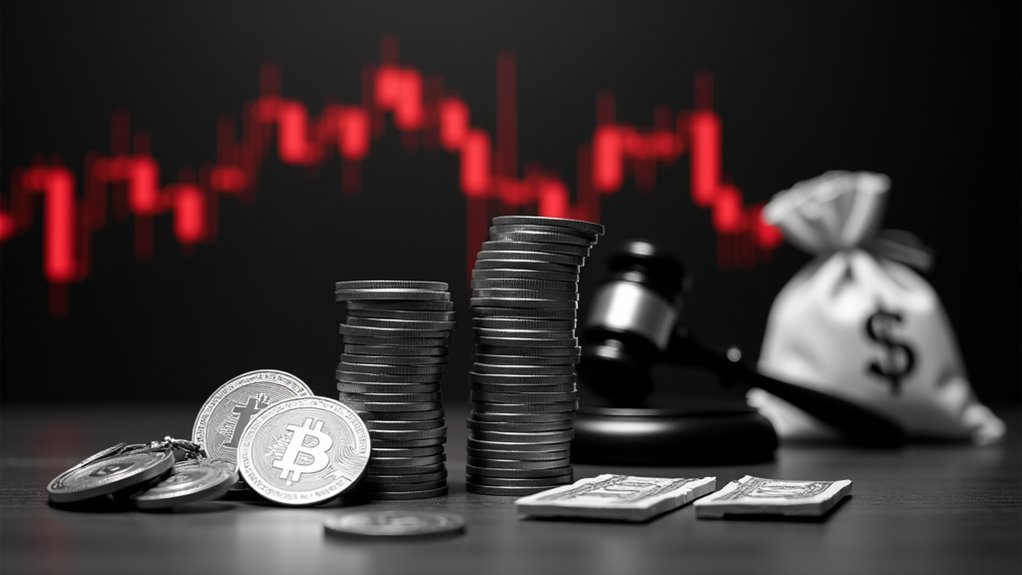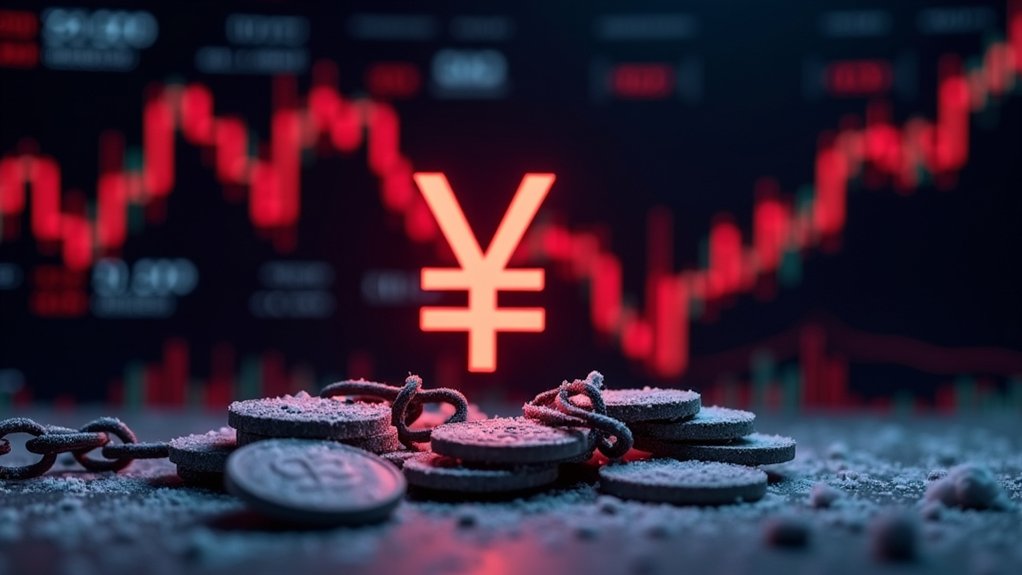How exactly does a market maker manipulate an entire crypto ecosystem without getting caught? Custom software, for starters. Years of fake trading. And a whole lot of nerve.
The scheme unraveled on March 23, 2025, when a major market maker finally admitted guilt in what prosecutors called a “massive” manipulation scheme. Authorities seized $23 million in assets. Not chump change.
The tactics were straight out of a financial crime playbook. Wash trading to fake liquidity. Spoofing with large orders they never intended to fulfill. Classic pump-and-dumps. Even oracle manipulation in DeFi platforms. They weren’t exactly subtle—just persistent. A notable example of manipulation was when FUD tactics contributed to a 30% drop in Bitcoin’s price after rumors about China’s ban on crypto in 2017.
Market manipulators didn’t innovate—they doubled down on old tricks with new tech. Persistence, not subtlety, was their true edge.
Regulators are finally catching up. The SEC has ramped up enforcement actions while IOSCO finalized standards for digital asset markets in 2024. Remember the first crypto insider trading conviction back in May 2023? That was just the beginning.
Now there’s actual international collaboration. The schemes often involve market cornering where manipulators acquire significant portions of cryptocurrency supply to control prices. Better late than never, right?
The damage is done though. Investor trust? Eroded. Price discovery? Distorted. Their manipulation created artificially wide bid-ask spreads in affected cryptocurrencies, a clear sign of deteriorating liquidity. The market’s more volatile than ever, and guess who’s taking the hit? Retail investors. Of course.
Detection methods are improving. Blockchain analysis can spot suspicious patterns. Machine learning algorithms flag anomalies. Exchanges are implementing better surveillance tools. Some are even working with regulators. Imagine that.
The legal consequences aren’t pretty. Criminal charges for fraud and market manipulation carry up to 10 years per violation. Add civil penalties, disgorgement of profits, and asset forfeitures. Then top it off with lifetime bans from financial markets. Game over.
For investors, it’s a harsh lesson. The crypto wild west is getting tamer, but slowly. Education initiatives are helping. Using regulated exchanges is crucial. So is critical thinking about market information.
Bottom line: a $23 million forfeiture sends a message. Market manipulation has consequences. Even in crypto. But for every schemer caught, how many are still out there? That’s the million-dollar question.





